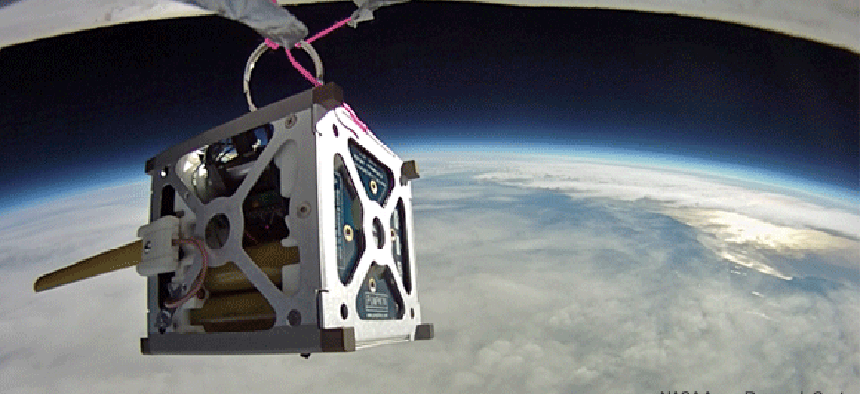NASA's smart-phone satellites launch new era in space communications


Connecting state and local government leaders
The small satellites built around Android phones, launched Sunday, mark a trend toward small, inexpensive satellites for a variety of uses.
Exploring space is an expensive proposition, but perhaps it doesn't have to be that way. That's the thinking behind NASA's PhoneSat program, which successfully launched three cell phones into space April 21, with the goal of using them as inexpensive satellites.
Earth's newest satellites cost no more than $7,000 each, and can go as low as $3,500 depending on how they are configured. For this mission, the satellites comprise modified Google-HTC Nexus One smart phones running the Android operating system. They have been equipped with protective cages, high-capacity batteries and a new transmitting antenna. This all fits within a four-inch cube. Additionally, the phone's ability to receive and transmit calls and text messages has been disabled.
"Smart phones offer a wealth of potential capabilities for flying small, low-cost, powerful satellites for atmospheric or Earth science, communications or other space-born applications," said Michael Gazarik, NASA's associate administrator for space technology in Washington, D.C.
The launch is being used as a technology demonstration program, to see if standard off-the-shelf smart phones can be modified to work in space. As such, the phones on this mission have been programmed to transmit a variety of data types to see what works and what needs more work. The phones are even trying to use their standard on-board cameras to take pictures of the Earth in sections, which will be stitched together into a one large image.
NASA is asking for help from amateur radio operators around the world, who are needed to intercept the signals the phones are sending. The phones are operating under the call sign KJ6KRW on a frequency of 437.425 MHz with a modulation of AX-25 AFSK and a data rate at 1200 bps.
Signals include audio files, picture files and data bursts. Anyone who receives a signal can send it into NASA, and the file, user name and location of the radio will be posted online. The two PhoneSat 1.0 satellites, named Graham and Bell, transmit every 28 and 30 seconds. The slightly more advanced PhoneSat 2.0 beta satellite, named Alexander, transmits every 25 seconds. A map shows where they are above the Earth and which stations have already received data packets.
NASA officials said that they expect the satellites to remain active for about two weeks, before their orbits decay and they burn up in the atmosphere.
So far, the PhoneSat program seems to be going well. NASA says that amateur radio operators have already intercepted and recorded over 200 signals from the cell phone satellites. If they continue to perform well, NASA says PhoneSat models could be used for climate research and other projects that require an orbiting satellite, but which in the past required expensive equipment that could delay important information gathering and which might have been deemed cost prohibitive.
NEXT STORY: Windows 8 and the PC vs. tablet debate




